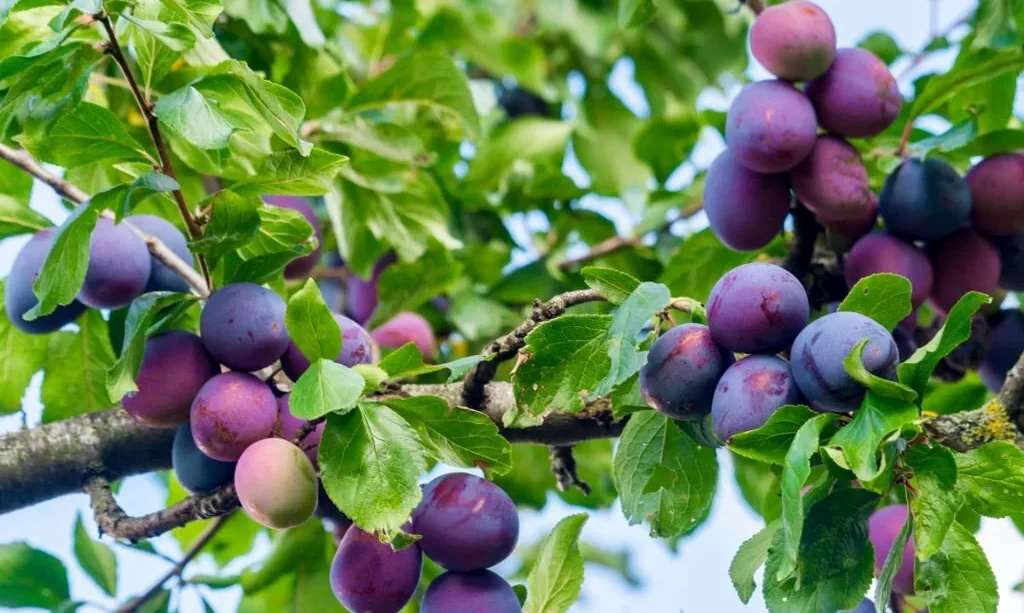Plum trees, with their lush green foliage and sweet, juicy fruit, have a special place in the hearts of gardeners and fruit lovers. Whether you’re growing them for homemade jams, pies, or simply to savor fresh off the tree, plum trees are a delightful addition to any orchard or backyard garden. But if you’re venturing into the world of plum tree cultivation, you might wonder, “Can plum trees pollinate themselves”? In this article, we’ll explore the intriguing realm of plum tree pollination to determine whether these fruit-bearing wonders can indeed go it alone or if they need a helping hand from pollinator friends. So, let’s delve into the world of plum trees and unveil the secrets of their pollination.
The Basics of Plum Tree Pollination
To understand whether plum trees can self-pollinate, it’s essential to grasp the fundamentals of pollination in fruit trees. Pollination is the process by which pollen from the male reproductive parts (anthers) of a flower is transferred to the female reproductive parts (stigmas) to fertilize the ovules and initiate fruit development. Fruit trees, including plums, can be categorized into two primary pollination types: self-pollinating and cross-pollinating. Self-pollinating trees have flowers that contain both male and female parts, allowing them to fertilize themselves. Cross-pollinating trees, on the other hand, require pollen from a different tree for successful fertilization. This interaction between multiple trees increases genetic diversity and often results in higher fruit yields. Now, the question is whether plum trees fall into the self-pollinating or cross-pollinating category.
Self-Pollinating Plum Trees
The good news for plum tree enthusiasts is that some plum tree varieties are indeed self-pollinating. These self-pollinating plum trees have flowers that carry both male and female reproductive organs, enabling them to produce fruit without the need for pollen from another tree. Such trees are a convenient choice for gardeners with limited space or those who prefer to have a single plum tree without the necessity of planting multiple trees for cross-pollination. Common self-pollinating plum varieties include Santa Rosa, Methley, and Stanley. These trees are not only prolific fruit producers but also make excellent options for small gardens or as standalone specimens. With self-pollinating plum trees, you can enjoy the convenience of having a solitary tree that can independently set fruit, making the joy of plum harvest all the more accessible.
Cross-Pollination and Improved Yields
While self-pollinating plum trees offer a straightforward solution for fruit production, cross-pollination plays a pivotal role in achieving improved yields and overall fruit quality. Cross-pollination occurs when pollen from one plum tree fertilizes the blossoms of another tree. This exchange of genetic material often leads to larger and more abundant fruit crops. Some plum tree varieties are more productive when cross-pollinated, and they thrive when planted in proximity to another compatible plum tree. For instance, the popular Santa Rosa plum tree, known for its sweet and juicy fruit, benefits from cross-pollination with another plum variety, such as the Methley plum. This interaction between two compatible trees helps ensure optimal fertilization and an increased harvest. Gardeners interested in boosting their plum yields should consider the cross-pollination requirements of their specific plum tree varieties.
How to Encourage Pollination
To encourage effective pollination in your plum orchard or garden, whether you’re growing self-pollinating or cross-pollinating plum trees, there are several strategies to consider. One crucial aspect is the presence of pollinator-friendly plants, such as flowering herbs and wildflowers. These attract bees and other pollinators that can assist in transferring pollen between plum trees. Additionally, proper tree spacing is essential to allow for good air circulation and ease of access for pollinators. Pruning your plum trees to maintain an open, balanced canopy can also enhance pollination by ensuring that flowers are readily accessible. Consistent care, including providing adequate water and proper nutrition, will promote healthy, vibrant plum blossoms, increasing the chances of successful pollination.
Conclusion
In conclusion, the pollination of plum trees depends on the specific variety you’re cultivating. While some plum trees are self-pollinating and can bear fruit independently, others benefit from cross-pollination for increased yields. Understanding the pollination requirements of your plum trees is essential for a successful harvest. Whether you have a self-pollinating plum tree that thrives on its own or you’re fostering a garden filled with diverse plum varieties for cross-pollination, the key to a bountiful plum crop lies in the effective transfer of pollen between blossoms. By encouraging pollinators, maintaining proper tree spacing, and providing the care your plum trees need, you can enjoy the sweet, succulent rewards of your plum harvest, ensuring that your garden or orchard is abundant with this delectable fruit.




